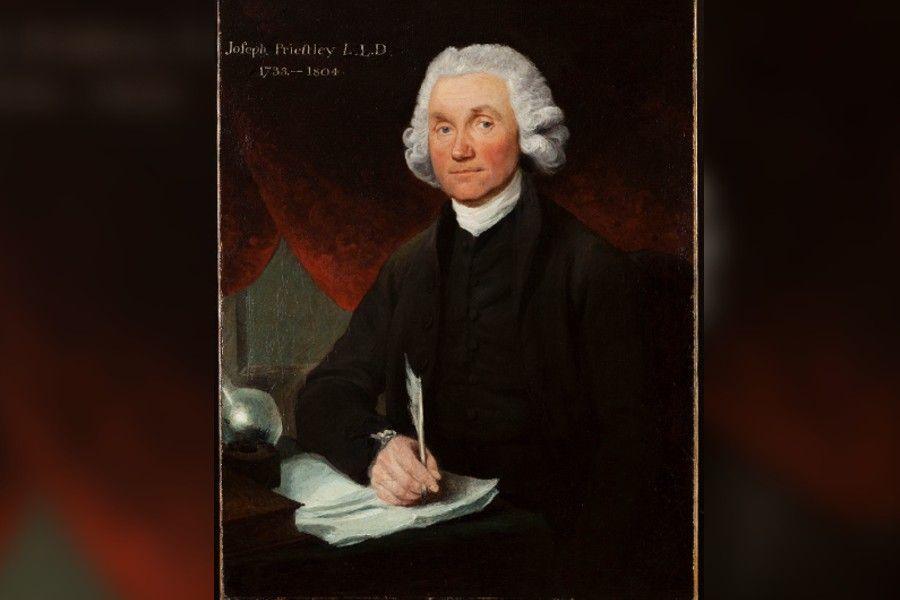Mint and a mouse: How oxygen was first captured

Joseph Priestley was at Bowood House between 1773 and 1780
- Published
He knew nine languages, published around 150 works and was friendly with the founding fathers of America.
However, in Britain, Joseph Priestley is perhaps best remembered for his science - especially in Wiltshire, where he captured oxygen 250 years ago this month.
Priestley spent seven years in Wiltshire, in quite luxurious surroundings.
He was employed by the Earl of Shelburne, who owned Bowood House near Calne.
Bowood is just as glamourous today as it was then, with the room that was Priestley's laboratory changed, but intact.
The house is open to the public and has put an exhibition on based off Priestley's time there from 1773.

This room was once Priestley's laboratory
There are dressed-up tour guides taking people round - Rob Miller has been one of them.
He explained that the Earl was in need of a librarian and someone to guide his sons' educations - but also an "intellectual companion."
Priestley was not sure at first though, even writing to his friend Benjamin Franklin for advice.
Franklin suggested a pros and cons list., external
In the end, he went and Mr Miller explained that Priestley's duties "were not onerous in the slightest - he looked after his books and advised on the education of the sons, but they had a full time tutor as well.
"He had plenty of time for his experiments and plenty of resources."
In other words, the Earl of Shelburne was generous with his cash.
On display is original documentation, like letters and a bill for laboratory equipment.
"It comes to £155, 14 shillings, which to me is quite a lot of money, but this was in the 1770s, that would be about £13,500 pounds now. Of course it wasn't his money, he was spending quite liberally," said Mr Miller.
The order included a lot of packing cases, but also things like vials, an electrical machine, conductor, a scale beam, syringes and an insulated stand.
Overall though - from the bills and receipts in the Bowood archive - the Earl spent money today worth £30,000 on chemicals and science equipment.
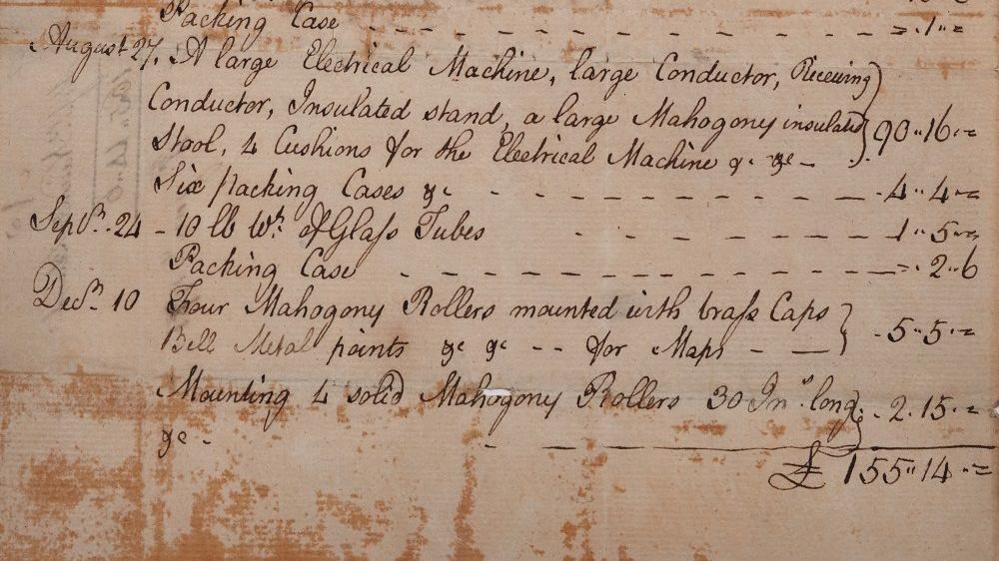
Part of the large bill of lab equipment Priestly requested

Rob Miller is one of the tour guides introducing people to Joseph Priestley
'Dephlogisticated air'
With that equipment though, Priestley captured oxygen - and there was animal testing involved.
Mr Miller explained the process: "With a burning lens, he used the sun's rays to burn mercuric oxide. He then collected the gas that was emitted and kept this in an airtight jar.
"He played around with the air in there - he didn't know what was in there at all at that point.
"He first put a mouse and candle in there. The mouse died sadly and the candle lost it's flame.
"He added mint to the jar and the mouse lived much longer and and the candle burned longer. He realised then that the mint plant was emitting air, what we now know as oxygen. So he nearly discovered photosynthesis."
Photosynthesis was discovered by someone he knew, Jan Ingenhousz, just a few years later, also at Bowood.
However, through this, Priestley had isolated oxygen - though he called it "dephlogisticated air" - and published his findings before anyone else who may have done similar.
He declared it "five or six times as good as common air."

Bowood's exhibition has used plastic mice to give an idea of the experiment
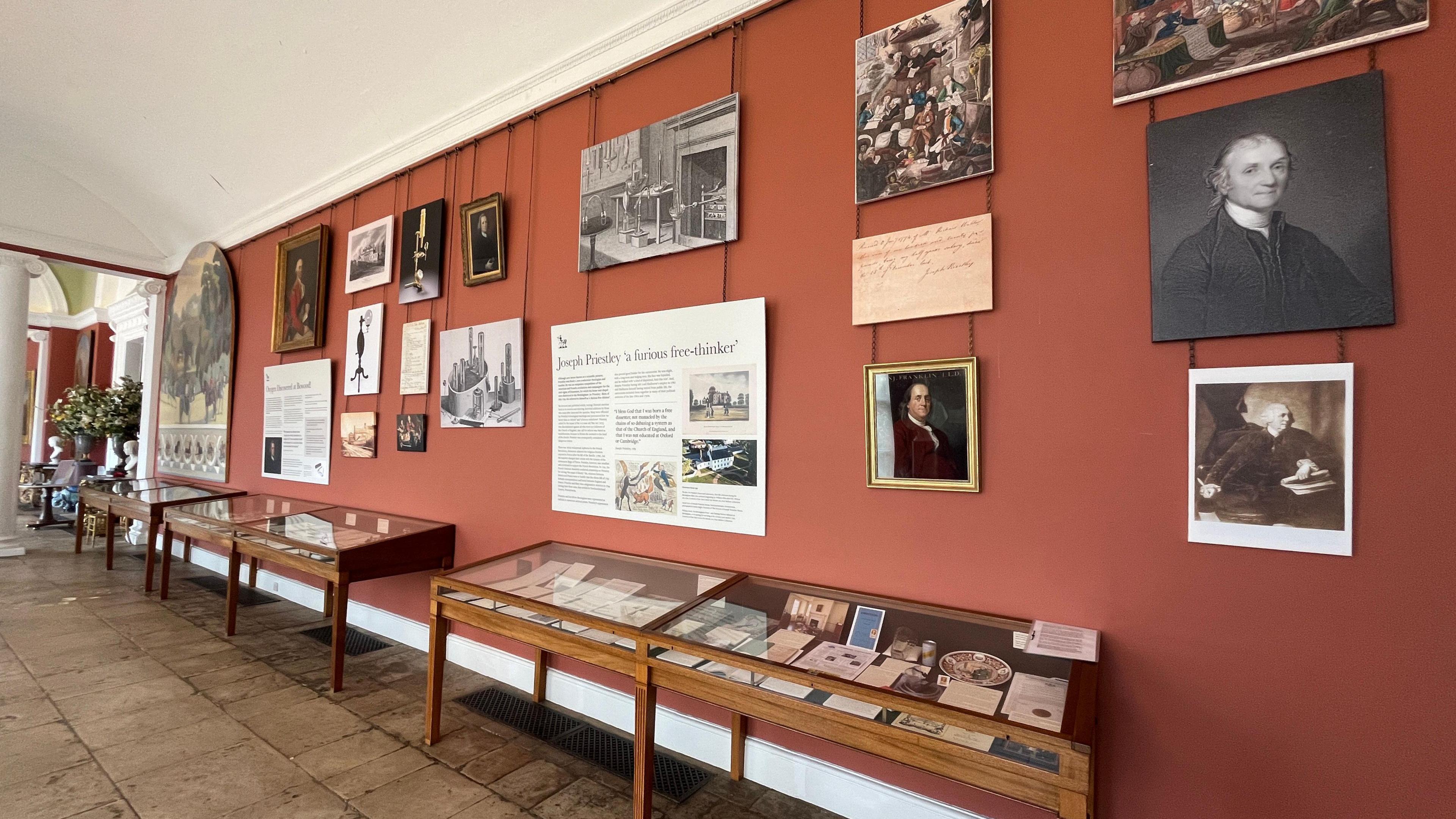
The exhibition is in the grand corridors of Bowood House
'Gin and Priestly'
Part of the exhibition is something more modern - a can of Schweppes soda water.
That's because - in the words of Mr Miller - "we should be drinking gin and Priestly!"
He added: "Priestly discovered the process for making carbonated water - ultimately he didn't make a penny from that. It was down to Schweppe who patented that idea.
"He was actually awarded a medal by the Royal Society for that discovery," explained Mr Miller.
Priestley has also been credited with inventing the rubber eraser - though he failed to patent that himself as well.
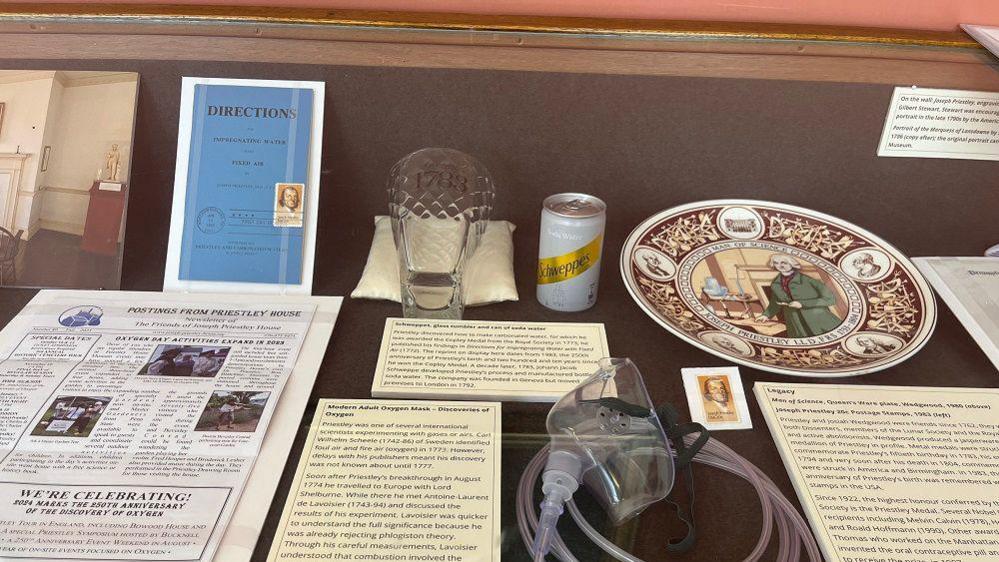
Oxygen might be an important discovery, but many of us can't imagine life without the odd fizzy drink
While Priestley did not discover the soft drink at Bowood, locals in Calne have been remembering his work this year.
A community tapestry has been created and a mural commissioned.
Calne Heritage Centre has also put on its own exhibition.
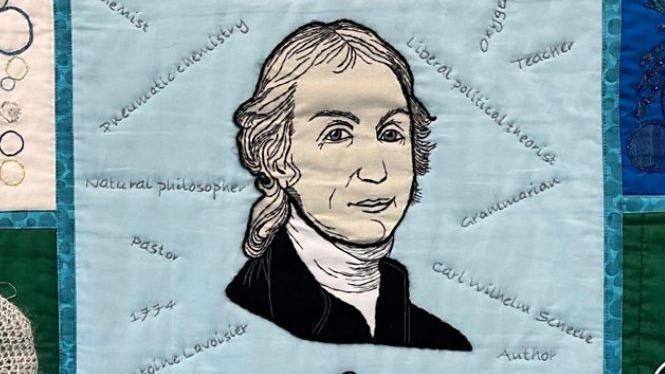
There has been a lot of work put into a tapestry by the community of Calne
Priestley was a man of many talents and people at the time would also have known him for his writing on a number of subjects - history, religion and politics included.
He came to Bowood at 40, married with a family.
His youngest child was born in Calne and called Henry, at the request of the Earl of Shelburne.
However, his position at Bowood did not last forever.
Priestley's views often got him into trouble - he was controversial when it came to religion and supported both the French Revolution and American independence.
None of this made him popular in England. After Calne, he went to Birmingham, where a mob burned down his home, then to London and eventually to the United States.
In America, life was different - after all, he already knew Benjamin Franklin and became friendly with Thomas Jefferson.
Get in touch
Tell us which stories we should cover in Wiltshire
Follow BBC Wiltshire on Facebook, external, X, external and Instagram, external. Send your story ideas to us on email or via WhatsApp on 0800 313 4630.
More stories like this
- Published21 July 2024

- Published28 April 2024
